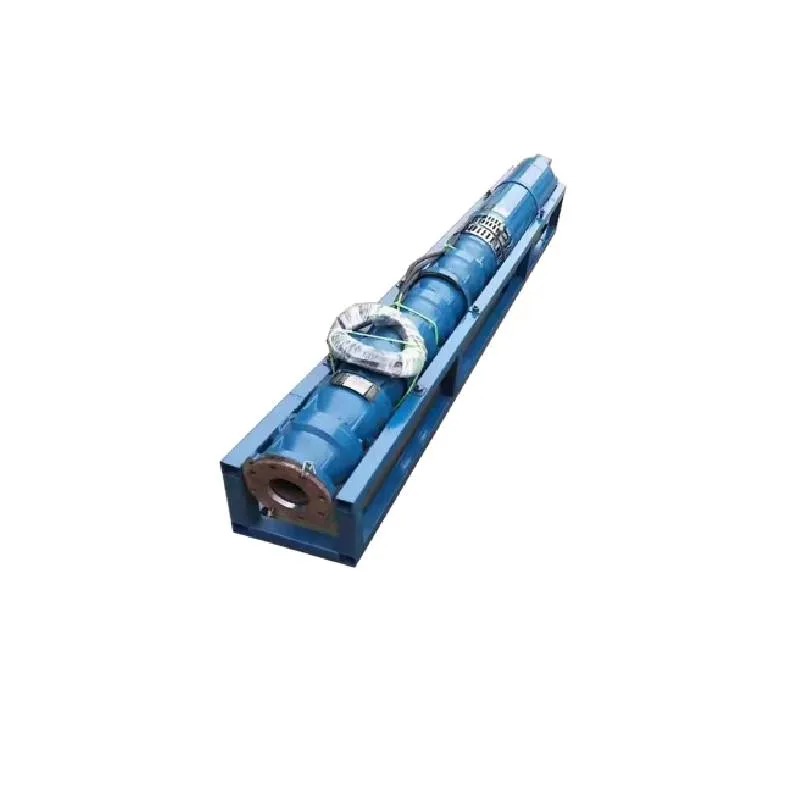Dec . 03, 2024 14:15 Back to list
variable speed deep well pump
Variable Speed Deep Well Pumps A Comprehensive Overview
In the ever-evolving landscape of water management and agricultural practices, the introduction of technology has transformed how we approach irrigation and water supply systems. Among the significant advancements is the variable speed deep well pump, which has become a vital component in efficient water extraction and management.
Understanding Variable Speed Deep Well Pumps
A deep well pump is designed to extract water from substantial depths, making it essential for agricultural, industrial, and residential applications where water tables are significantly low. Traditional deep well pumps often operate at a constant speed, which can lead to inefficiencies and unnecessary energy consumption. In contrast, variable speed deep well pumps adjust the motor speed based on the demand for water, resulting in improved efficiency and reduced operational costs.
The core mechanism behind variable speed pumps is the use of a variable frequency drive (VFD). This device regulates the frequency and voltage supplied to the pump motor, allowing the pump to operate at different speeds rather than just on or off. This flexibility enables the pump to maintain optimal performance under varying conditions, ensuring that water is delivered precisely as needed.
Benefits of Variable Speed Technology
1. Energy Efficiency One of the most significant advantages of variable speed deep well pumps is their ability to conserve energy. By adjusting the motor speed according to demand, these pumps can drastically reduce energy consumption compared to traditional pumps. Studies have shown that variable speed systems can lead to energy savings of up to 30-50%.
2. Enhanced System Performance Variable speed pumps provide a consistent flow rate irrespective of changing water levels and demand. This feature is particularly beneficial in agricultural applications where water is needed at different rates throughout the growing season.
variable speed deep well pump

3. Reduced Wear and Tear Operating at lower speeds when full capacity is not needed reduces the stress on pump components. This results in less wear and tear, leading to extended service life and reduced maintenance costs.
4. Improved Water Quality The ability to control flow rates minimizes the risk of damaging the aquifer through over-pumping. This is crucial in maintaining the water quality in deep wells, as excessive extraction can lead to issues such as contamination and depletion of the water source.
5. Automation and Remote Monitoring Modern variable speed pumps often come equipped with smart technology. This allows for remote monitoring and control, enabling operators to manage water resources more efficiently. Alerts and diagnostics help in preemptively addressing issues before they escalate, further enhancing reliability.
Applications and Future Prospects
Variable speed deep well pumps find applications across various sectors, including agriculture, municipal water supply, and industrial processes. In agriculture, they play a critical role in irrigation systems, adapting to the varying needs of crops as they grow. In municipal systems, these pumps ensure that water delivery aligns with urban demands, particularly during peak usage times.
The future of variable speed deep well pumps looks promising, driven by advancements in technology and a growing emphasis on sustainability. As regulations regarding energy consumption tighten and the impacts of climate change continue to affect water resources, the adoption of energy-efficient solutions like variable speed pumps will likely increase.
Conclusion
In summary, variable speed deep well pumps stand at the forefront of modern water management solutions. Their blend of energy efficiency, enhanced performance, and adaptability makes them indispensable in various applications. Embracing these technologies not only supports economic savings but also promotes sustainable practices that are crucial for preserving our water resources for future generations. As we move forward, innovations in pump technology will continue to play a vital role in ensuring that our water management systems are efficient, reliable, and responsive to the demands of a changing world.
-
Submersible Water Pump: The Efficient 'Power Pioneer' of the Underwater World
NewsJul.01,2025
-
Submersible Pond Pump: The Hidden Guardian of Water Landscape Ecology
NewsJul.01,2025
-
Stainless Well Pump: A Reliable and Durable Pumping Main Force
NewsJul.01,2025
-
Stainless Steel Submersible Pump: An Efficient and Versatile Tool for Underwater Operations
NewsJul.01,2025
-
Deep Well Submersible Pump: An Efficient 'Sucker' of Groundwater Sources
NewsJul.01,2025
-
Deep Water Well Pump: An Efficient 'Sucker' of Groundwater Sources
NewsJul.01,2025
-
 Submersible Water Pump: The Efficient 'Power Pioneer' of the Underwater WorldIn the field of hydraulic equipment, the Submersible Water Pump has become the core equipment for underwater operations and water resource transportation due to its unique design and excellent performance.Detail
Submersible Water Pump: The Efficient 'Power Pioneer' of the Underwater WorldIn the field of hydraulic equipment, the Submersible Water Pump has become the core equipment for underwater operations and water resource transportation due to its unique design and excellent performance.Detail -
 Submersible Pond Pump: The Hidden Guardian of Water Landscape EcologyIn courtyard landscapes, ecological ponds, and even small-scale water conservancy projects, there is a silent yet indispensable equipment - the Submersible Pond Pump.Detail
Submersible Pond Pump: The Hidden Guardian of Water Landscape EcologyIn courtyard landscapes, ecological ponds, and even small-scale water conservancy projects, there is a silent yet indispensable equipment - the Submersible Pond Pump.Detail -
 Stainless Well Pump: A Reliable and Durable Pumping Main ForceIn the field of water resource transportation, Stainless Well Pump has become the core equipment for various pumping scenarios with its excellent performance and reliable quality.Detail
Stainless Well Pump: A Reliable and Durable Pumping Main ForceIn the field of water resource transportation, Stainless Well Pump has become the core equipment for various pumping scenarios with its excellent performance and reliable quality.Detail
